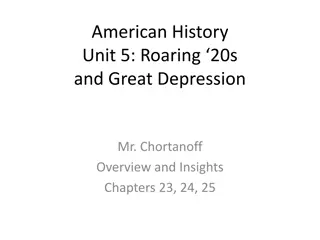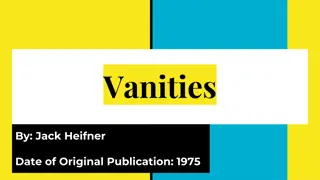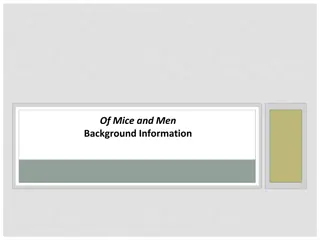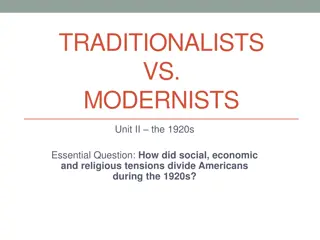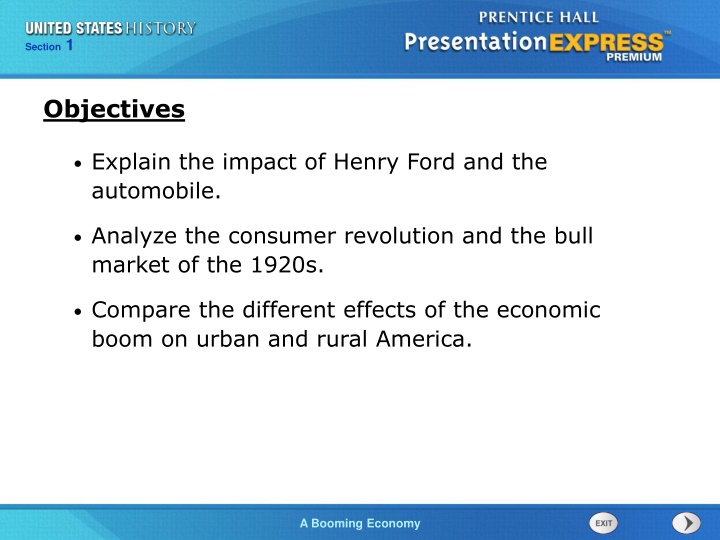
Impact of Henry Ford and the 1920s Consumer Revolution
Explore how Henry Ford and the automobile industry impacted American life in the 1920s, leading to a consumer revolution and economic boom marked by mass production, the Model T, scientific management, assembly lines, installment buying, bull markets, and buying on margin.
Download Presentation

Please find below an Image/Link to download the presentation.
The content on the website is provided AS IS for your information and personal use only. It may not be sold, licensed, or shared on other websites without obtaining consent from the author. If you encounter any issues during the download, it is possible that the publisher has removed the file from their server.
You are allowed to download the files provided on this website for personal or commercial use, subject to the condition that they are used lawfully. All files are the property of their respective owners.
The content on the website is provided AS IS for your information and personal use only. It may not be sold, licensed, or shared on other websites without obtaining consent from the author.
E N D
Presentation Transcript
Section 1 Chapter 25 Section 1 Objectives Explain the impact of Henry Ford and the automobile. Analyze the consumer revolution and the bull market of the 1920s. Compare the different effects of the economic boom on urban and rural America. bttn_exit bttn_exit bttn_prev bttn_next bttn_next The Cold War Begins A Booming Economy
Section 1 Chapter 25 Section 1 Terms and People Henry Ford applied mass production techniques to manufacture automobiles; initiated changes that had a major impact on wages, working conditions, and daily life mass production therapid, large-scale manufacture of identical products Model T automobile manufactured by Henry Ford to be affordable on the mass market scientific management analysis of a manufacturing process to improve speed and efficiency bttn_exit bttn_exit bttn_prev bttn_prev bttn_next bttn_next The Cold War Begins A Booming Economy
Section 1 Chapter 25 Section 1 Terms and People (continued) assembly line manufacturing technique in which products move past workers, each of whom adds one small component consumer revolution a flood of new, affordable goods installment buying buying on credit by making an initial down payment and then paying the balance over time bttn_exit bttn_exit bttn_prev bttn_prev bttn_next bttn_next The Cold War Begins A Booming Economy
Section 1 Chapter 25 Section 1 Terms and People (continued) bull market a period of rising prices in the stock market buying on margin buying stock on credit by paying a percentage up front and borrowing the rest of its cost bttn_exit bttn_exit bttn_prev bttn_prev bttn_next bttn_next The Cold War Begins A Booming Economy
Section 1 Chapter 25 Section 1 How did the booming economy of the 1920s lead to changes in American life? During the 1920s, the American economy experienced tremendous growth. Using mass production techniques, workers produced more goods in less time than ever before. The boom changed how Americans lived and helped create the modern consumer economy. bttn_exit bttn_exit bttn_prev bttn_prev bttn_next bttn_next The Cold War Begins A Booming Economy
Section 1 Chapter 25 Section 1 The 1920s were a time of rapid economic growth in the United States. Much of this boom can be traced to the automobile. bttn_exit bttn_exit bttn_prev bttn_prev bttn_next bttn_next The Cold War Begins A Booming Economy
Section 1 Chapter 25 Section 1 Before 1920, only wealthy people could afford cars. By applying innovative manufacturing techniques, Henry Ford changed that. His affordable Model T became a car for the people. bttn_exit bttn_exit bttn_prev bttn_prev bttn_next bttn_next The Cold War Begins A Booming Economy
Section 1 Chapter 25 Section 1 Ford made the Model T affordable by applying mass production techniques to making cars. A moving assembly line brought cars to workers, who each added one part. Ford consulted scientific management experts to make his manufacturing process more efficient. The time to assemble a Model T dropped from 12 hours to just 90 minutes. bttn_exit bttn_exit bttn_prev bttn_prev bttn_next bttn_next The Cold War Begins A Booming Economy
Section 1 Chapter 25 Section 1 Ford also raised his workers pay and shortened their hours. With more money and more leisure time, his employees would be potential customers. By 1927, 56% of American families owned a car. bttn_exit bttn_exit bttn_prev bttn_prev bttn_next bttn_next The Cold War Begins A Booming Economy
Section 1 Chapter 25 Section 1 How the Automobile Changed America Road construction boomed, and new businesses opened along the routes. Other car-related industries included steel, glass, rubber, asphalt, gasoline, and insurance. Workers could live farther away from their jobs. Families used cars for leisure trips and vacations. Fewer people traveled on trolleys or trains. bttn_exit bttn_exit bttn_prev bttn_prev bttn_next bttn_next The Cold War Begins A Booming Economy
Section 1 Chapter 25 Section 1 The 1920s saw a consumer revolution. Using installment buying, people could buy more. New products flooded the market. Advertising created demand. bttn_exit bttn_exit bttn_prev bttn_prev bttn_next bttn_next The Cold War Begins A Booming Economy
Section 1 Chapter 25 Section 1 Rising stock market prices also contributed to economic growth. Throughout the 1920s, a bull market meant stock prices kept going up. Investors bought on margin, purchasing stocks on credit. By 1929, around four million Americans owned stocks. bttn_exit bttn_exit bttn_prev bttn_prev bttn_next bttn_next The Cold War Begins A Booming Economy
Section 1 Chapter 25 Section 1 During the 1920s, cities grew rapidly. Immigrants, farmers, African Americans, and Mexican Americans were among those who settled in urban areas. bttn_exit bttn_exit bttn_prev bttn_prev bttn_next bttn_next The Cold War Begins A Booming Economy
Section 1 Chapter 25 Section 1 Cities expanded outward, thanks to automobiles and mass transit systems. More and more people who worked in cities moved to the suburbs. Suburbs grew faster than inner cities. bttn_exit bttn_exit bttn_prev bttn_prev bttn_next bttn_next The Cold War Begins A Booming Economy
Section 1 Chapter 25 Section 1 While cities and suburbs benefited from the economic boom, rural America struggled. Farm incomes declined or remained flat through most of the 1920s. bttn_exit bttn_exit bttn_prev bttn_prev bttn_next bttn_next The Cold War Begins A Booming Economy
Section 1 Chapter 25 Section 1 Section Review QuickTake Quiz Know It, Show It Quiz Button-Mac Button-PC ExamViewButton bttn_exit bttn_exit bttn_prev bttn_prev bttn_next The Cold War Begins A Booming Economy



